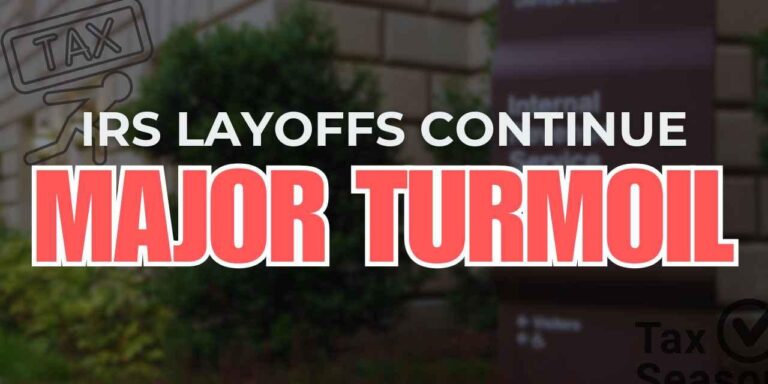IRS Challenges Threaten a Significant Drop in U.S. Tax Revenue
How IRS Instability Could Undermine Federal Tax Income
The Internal Revenue Service is currently navigating a period of internal disruption that experts warn could lead to a reduction in federal tax revenue by as much as 10 percent. This decline is largely attributed to operational setbacks caused by leadership disputes, workforce shortages, and stalled modernization efforts. These issues are impeding essential IRS functions such as taxpayer support, audit execution, and compliance enforcement, which collectively jeopardize the government’s capacity to efficiently collect taxes owed.
Several critical challenges are driving this potential revenue shortfall:
- Persistent staffing deficits worsened by low employee morale and unstable leadership
- Halted or delayed technology enhancements aimed at expediting tax return processing
- A marked decrease in audit activities, increasing the risk of tax evasion and non-compliance
| Area Affected | Projected Change |
|---|---|
| Speed of Tax Return Processing | ↓ 15% |
| Audit Frequency | ↓ 20% |
| Total Tax Revenue | ↓ 10% |
Root Causes Behind the Declining Tax Collections
The anticipated 10 percent drop in tax revenue is primarily linked to systemic inefficiencies within the IRS. Staffing shortages, particularly among auditors, combined with suspended enforcement actions, have severely limited the agency’s ability to collect taxes effectively. Additionally, outdated IT infrastructure and bureaucratic hurdles have contributed to slower processing times and weakened enforcement efforts.
Key contributors to this decline include:
- Hiring freezes and elevated turnover rates affecting frontline audit personnel
- Budgetary limitations restricting technology upgrades and investigative resources
- Organizational restructuring causing operational confusion and inefficiencies
- Taxpayer uncertainty and compliance fatigue amid inconsistent enforcement policies
| Factor | Severity | Estimated Revenue Impact |
|---|---|---|
| Workforce Deficiencies | High | $7 billion |
| Audit Reductions | Moderate | $3 billion |
| Technological Constraints | Moderate | $1 billion |
Implications for Public Services and Government Programs
A 10 percent reduction in tax revenue could severely impact funding for vital government initiatives. Programs such as Social Security, Medicare, and Medicaid risk facing budget deficits that may delay or reduce benefits for millions of Americans. Additionally, federal agencies dependent on consistent tax inflows might be forced to scale back operations, potentially postponing infrastructure projects and weakening public safety efforts.
State and local governments, already grappling with financial pressures, could experience further funding shortages as federal grants diminish. This scenario threatens essential services including education, transportation, and emergency response, potentially leading to higher costs or limited access for communities. Key areas of concern include:
- Cutbacks in social welfare funding
- Postponement of infrastructure development
- Reduced budgets for law enforcement and public safety
- Lowered support for education and community health programs
| Program | Potential Consequence | Population Affected |
|---|---|---|
| Social Security | Delays or cuts in benefits | Retirees and disabled individuals |
| Public Education | Reduced funding for schools | Students and educators |
| Healthcare | Lower Medicaid support | Low-income families |
| Infrastructure | Project delays and cancellations | General public |
Approaches to Reinforce IRS Efficiency and Safeguard Revenue
Addressing the looming revenue shortfall requires a comprehensive strategy focused on enhancing IRS operational capacity and boosting taxpayer compliance. Priorities include investing in cutting-edge technology to accelerate processing and reduce backlogs, expanding workforce training to improve audit precision, and strengthening communication efforts to foster voluntary compliance. These measures aim to streamline IRS workflows and rebuild taxpayer confidence, encouraging timely and accurate tax filings.
In addition, strategic reforms and resource reallocation are vital to maintaining steady revenue streams amid current challenges. Utilizing advanced data analytics can help pinpoint high-risk areas of tax evasion, allowing for more targeted audits. Collaboration with state and local tax agencies can broaden intelligence sharing and enforcement reach. Key initiatives under consideration include:
- Technology enhancements: Deploying AI-powered fraud detection and automated filing platforms
- Workforce development: Boosting recruitment and retention in critical departments
- Legislative advocacy: Simplifying tax codes and closing loopholes to improve compliance
| Initiative | Anticipated Benefit | Projected Timeline |
|---|---|---|
| Advanced Analytics | Enhanced identification of tax evasion | 12-18 months |
| Staff Training & Hiring | Improved audit coverage and accuracy | 6-12 months |
| Integrated Taxpayer Support | Greater voluntary compliance rates | 9-15 months |
Final Thoughts
The Internal Revenue Service’s current operational challenges pose a serious threat to federal tax revenue, with a potential 10 percent decline carrying wide-reaching consequences for government funding and public services. Swift and strategic action by policymakers and IRS leadership is essential to restore stability, enhance efficiency, and secure the nation’s fiscal future.







